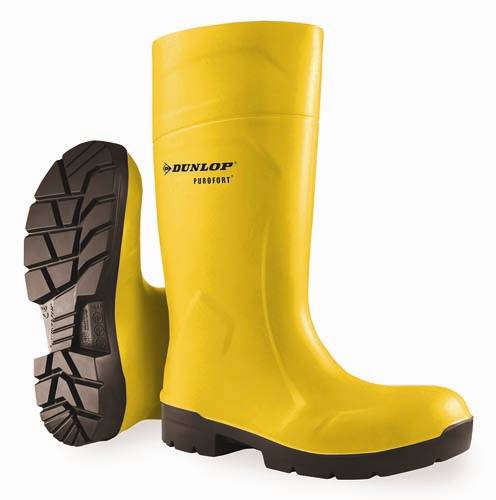HC Plastics News: For many years, American workers have been working on boots, and now they have more choices than ever before. From the original Wellington boots to leather cowboy boots, neoprene boots or PVC boots; one of the latest innovations in safety shoes: polyurethane PU, boots, what materials can bring you safety and comfort? We start with polyurethane. Polyurethane boots are made up of polyols, isocyanates and other ingredients (depending on the end user's needs) and use millions of bubbles to create lightweight insulated boots with great abrasion resistance. This innovative material is two to three times longer than traditional materials. Not all PU boots are the same because they can be constructed in two steps. The oldest is a low-voltage system that creates standard PU boots. The best process is a high pressure system that produces lightweight boots with optimum thermal, tear and abrasion resistance. But how does PU compete with other boots on the shelf? Let's take a look at some of the key features consumers pay attention to when choosing safety shoes: Weight: As mentioned above, PU boots are made up of millions of bubbles, 35% lighter than impregnated or traditional neoprene boots, 40% lighter than rubber boots, and 40% lighter than PVC boots. Imagine you have 2 to 3 pounds of weight on your feet every day. Comfort: Compared to other materials, polyurethane is 40% more elastic than other materials and 80% more elastic than EVA foam, creating a boot that moves and bends as the wearer moves. Walk or stand on lightweight and soft polyurethane all day, completely free of hard plastic or heavy rubber, support legs and feet for a long time, no sweaty feet. Protection: Polyurethane contains the same steel or composite safety components as other materials while providing better wear and wear resistance. For example, the flexibility and tear resistance of the PU structure of the boot makes it difficult for the cutter or blade to pierce the boot. Polyurethane can provide excellent protection against animal fats, mineral oils and natural gas, derivatives, and even solvents. However, for chemicals such as concentrated acids and bases, polyvinyl chloride, etc., it is necessary to add suitable additives (Reminder: You can ask the shoe supplier to provide a quantitative table of chemicals for your boots in the workplace and in the environment.) Durability: The high quality of polyurethane makes it more expensive than other traditional materials, but the high cost often offsets the life of the polyurethane. For example, low pressure PU lasts for an average of 9 months, while high pressure PU lasts for an average of 12 months. Compared to neoprene boots that last for about six months, PVC lasts for four to six months, EVA lasts five to seven months, and PU is a full year. Innovative PU boots stand out in almost every category of competition, so footwear plans should be included in your employee plan. Properly used, you will find that this investment will provide your team with the safety and comfort they deserve. Editor in charge: Wang Ning 12
An aldehyde is an organic compound containing a functional group with the structure −CHO, consisting of a carbonyl center (a carbon double-bonded to oxygen) with the carbon atom also bonded to hydrogen and to an R group which is any generic alkyl or side chain. The group-without R-is the aldehyde group, also known as the formyl group. Aldehydes are common in organic chemistry. Our main aldehyde products are Formaldehyde and paraformaldehyde.
Industrial Grade Formaldehyde,Formaldehyde Solution,Formaldehyde Liquid,Formaldehyde Solution Used For Adhesive Shijiazhuang Xinlongwei Chemical Co., Ltd. , https://www.xinlongwei-chem.com

Polyurethane provides more comprehensive protection in protective shoes